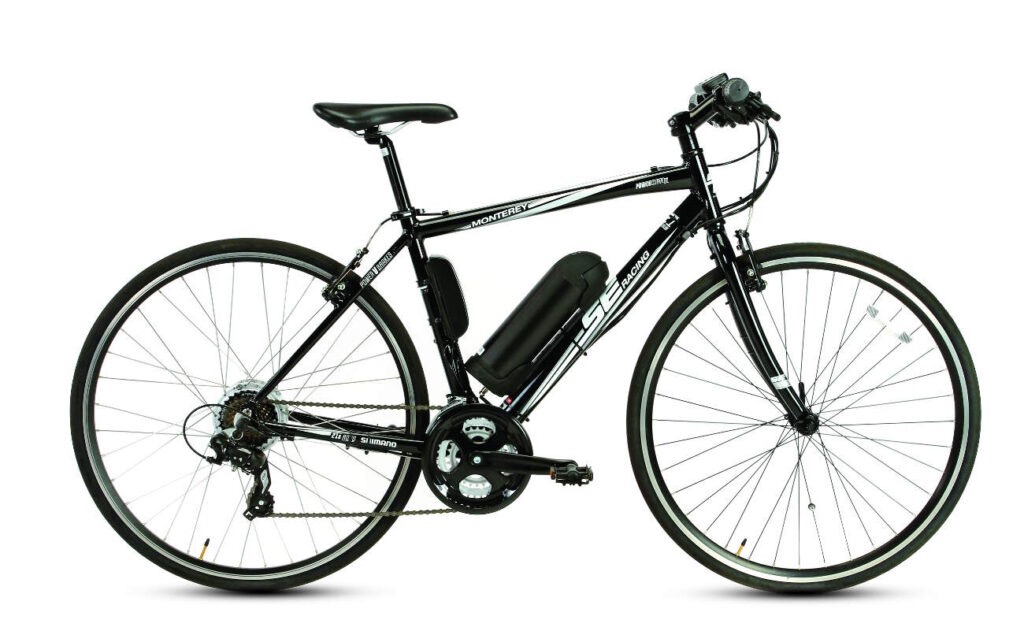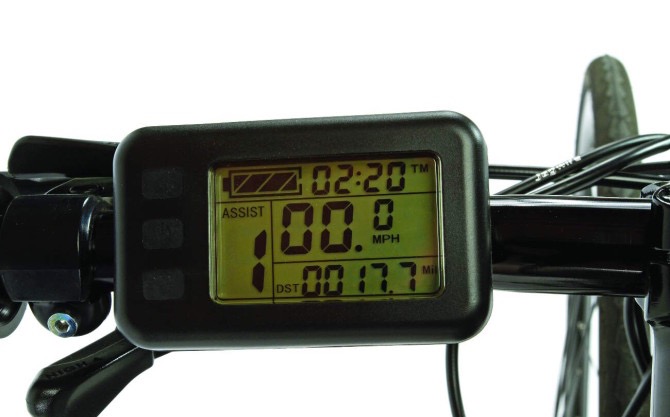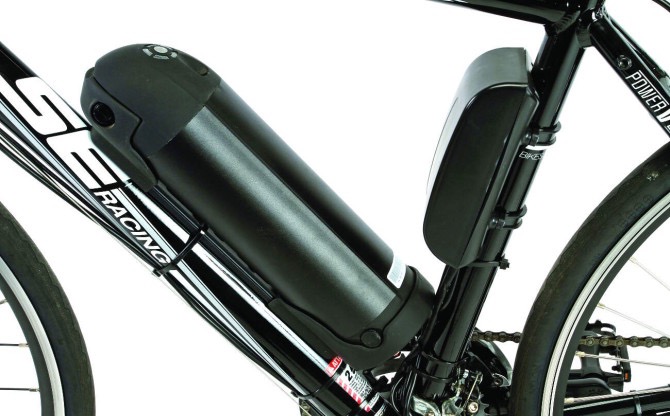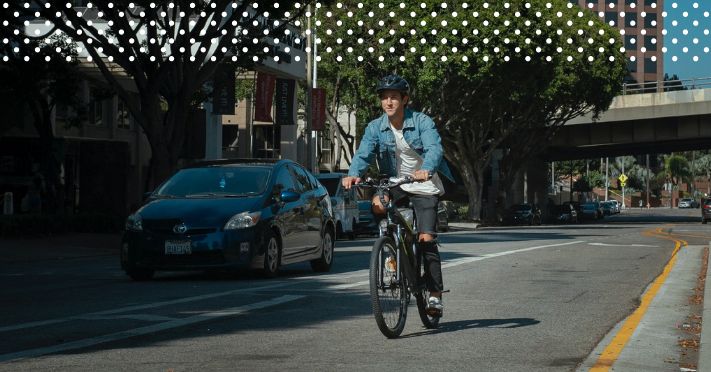Photos by Pat Carrigan

I already knew that there were obvious benefits if I chose to run the occasional errand by bicycle instead of by car. One less car on the road, one less pound of carbon dioxide released into the atmosphere, one less inch on my waistline, and one healthier, happier me.
Recently, my dad challenged me to make the same decision with my daily commute to school. (Ride to school?!) But when I sat down and thought about it, I suddenly realized that if I chose to commute daily to school by bicycle, those same benefits would greatly multiply.
Commute Challenge: Swapping The Car For An E-Bike
The six-and-a-half mile one-way commute by car from home to school can be accomplished in around 14 minutes. During heavy traffic and stopping at several lights, sometimes it can take 20 minutes or more. But how will the e-bike compare?

What About The E-Bike?
A new Monterey 21+ from BM E-Bike had put riding on my mind. The little bike starts as a basic hybrid road bike, and BM E-Bike converts it to electric assist. Even though the bike is budget-priced at $1,375, it features automatic pedal assist, and there’s a throttle if I don’t feel like pedaling.
There’s also a computer display that allows me to monitor speed, battery, and assist level. The assist is modest but helpful, has five levels, and runs out at 16 mph, but that is fast enough, especially according to my mom.
E-Bike vs. Car Commuting
While testing my new e-bike, I compared riding to school with driving to school. Don’t get me wrong. I love my Honda Accord; I just wanted to compare my two favorite means of transportation. The same commute to school on my electric bike can be achieved in around 25 minutes at a constant pace with no stopping.
The route consists of mostly bike paths and skirts alongside most of the same city streets I’d normally be driving on, but there are fewer traffic lights to contend with. Best of all, riding on the bike path gets me there without looking like I just finished a workout. And the Monterey 21+ easily made the round trip on a single charge.

Probably the biggest thing I noticed was the difference between parking my car and finding a bike rack. Whenever I arrive at school by car, finding an open spot is quite challenging. I usually circle the parking lot like I’m at the mall on Black Friday! Eventually, I’ll find a spot, but more often than not, it’s in the remote lot, which means I have to walk some distance to get to class.
It’s not that I mind the exercise, but it is a variable that can wreak havoc on my getting to class on time. Luckily, most schools provide a few different bike-rack locations at different parts of the campus for cyclists. Depending on availability, making it to my first class by bike could easily be as quick as driving.

The Money Equation
Besides saving time, another important consideration that most students will appreciate is the money saved in commuting to school by e-bike. When I broke it down, it read: It’s about $25 a week in gas and $50 for a one-semester parking pass. Add that all up, and the total savings of riding instead of driving over the three-and-a-half months was about $400. For most students, this is a substantial saving, especially if you are juggling a part-time job while in school.

One thing to remember: bike theft is a common problem on most campuses. Investing in essential e-bike accessories like a quality bike lock is essential to ward off thieves, and properly securing your bike is very important. We also suggest registering your e-bike with the National Bike Registry. Many stolen bikes are recovered by police each year, but there is no way to identify the owner.
NBR enables you to register your bicycle by serial number in its national database and apply the special label you receive to your bike. If your bike is ever stolen, it can be identified, and you can prove ownership. Law enforcement anywhere can access the database and immediately notify you that your bike has been recovered. The one-time fee of $10 gives you ten years of coverage, and it’s well worth the cost.
Top Benefits of Commuting to School via E-Bike
The top benefits I enjoyed by swapping my car for an e-bike to commute to school are:
1. Save on gas money
2. Save money on gym membership
3. Relax your mind and body
4. Keep your heart healthy
5. Faster than walking
6. Wake yourself up
7. Enjoy the outdoors
8. Skip the traffic
9. Decrease pollution
10. Bragging rights over your lazy friends

Ready to join Molly by commuting to school or work via e-bike?
Check out our guide to riding an electric bike safely and get insight into which model you need when choosing an electric bike.

